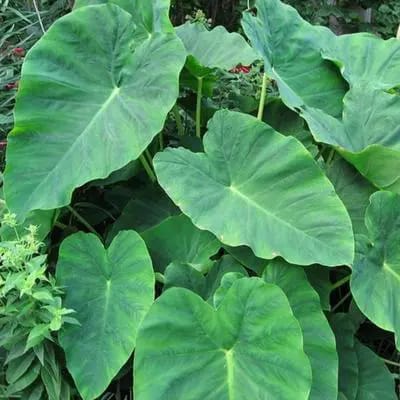ELEPHANT ear is a common name for a few different plant genera known for their large leaves, perhaps an allusion to the prominent ears that elephants are known for.
Common varieties include colocasia, alocasia, and xanthosoma. All of these elephant ear plants are tropical perennials, grown for their dramatic impact and lush foliage.
Elephant ears can be grown as houseplants, but also as large outdoor plants in warmer weather.
Their maturity size will depend on the variety, but on average they will grown to 3–6 feet tall, with a similar spread. These fast-growing plants will achieve their full size, within two months.
They only bloom when they reach maturity, usually by the third growing season, and if it has perfect growing conditions. However, most gardeners remove any flowers, so all the energy can go into producing more attractive leaves.
If you leave the flowers on the plant, they will develop into clusters of red, yellow, or orange berries. The flowers have a sweet smelling aroma, attractive to bees and other pollinators.
It can be planted in full sun to partial shade, but it does prefer to grow in a part shade or a dappled sunny location.
Cultivars with darker leaves need more sun to maintain their colour. The more sun you give elephant ears, the more you will have to water them.
Wilting is a sign that the plant is getting too much sun or heat exposure and not enough water. Consider moving your plant to a shadier spot and schedule its watering more frequently. Dividing an old plant can rejuvenate it.
They grow best in rich, moist soil, to the point of being wet, but not soggy. You need to keep elephant ear plants consistently moist. Never allow the soil to dry out thoroughly.
As with many large leaved tropical plants, elephant ears are heavy feeders. Apply a water soluble, high nitrogen fertiliser every two to three weeks.
Propagating elephant ears involves division of the tubers at the end of the growing season in the autumn and store them away until the next growing season in Spring. Ensure that you wear gloves to protect your skin from the sap.
Allow the cut to dry and scab over, while sitting on a tray or plate. Keep it dry, at room temperature, and out of direct sun. After about a week, wrap it in paper and store it in a dry, cool spot, until the following Spring.





